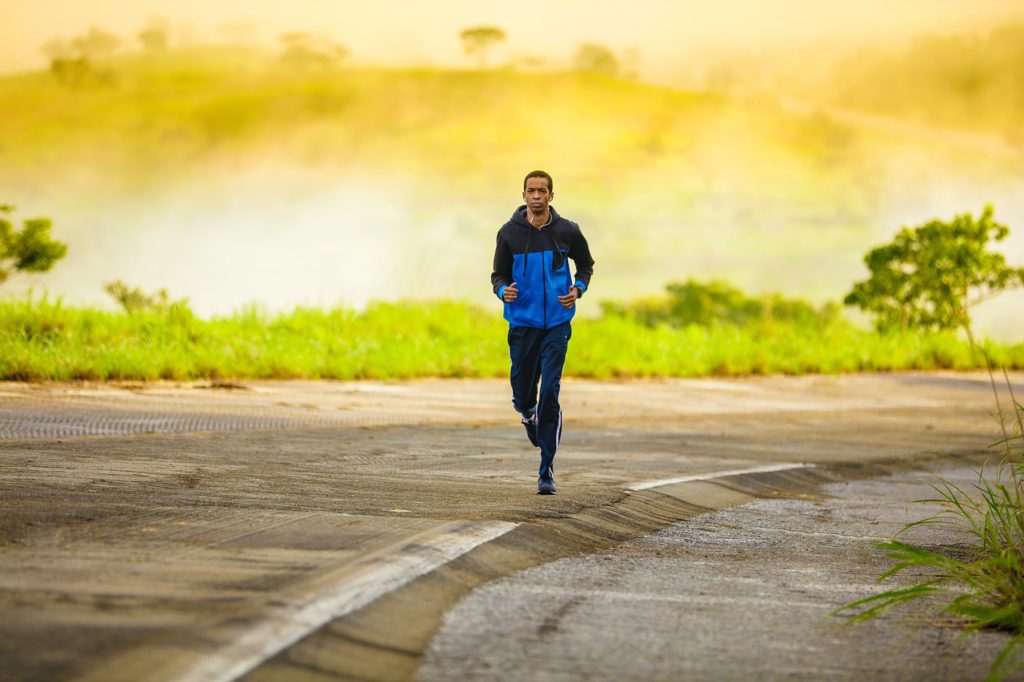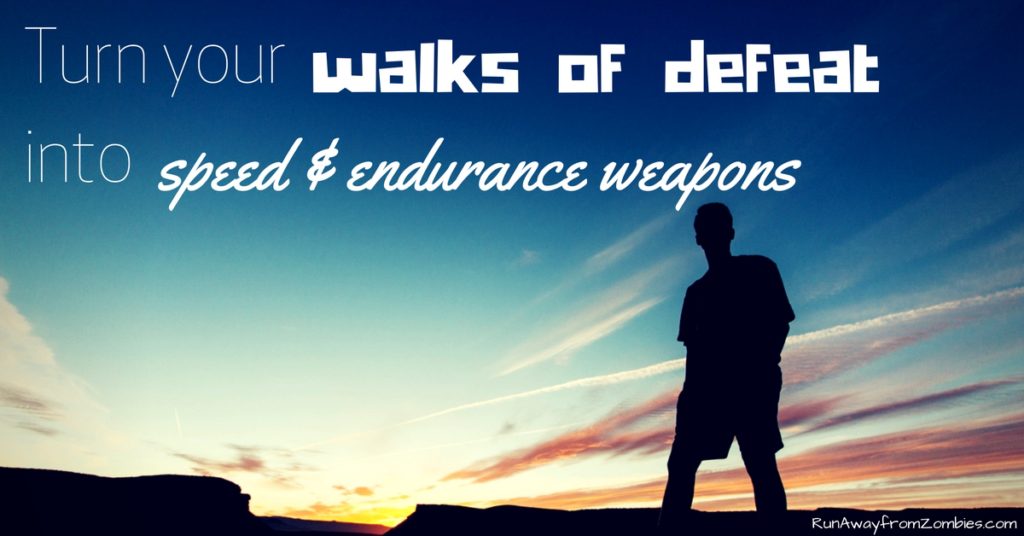Many considering walking during their run as defeat. They run until they can’t possibly run any longer. Then they slump into a walk, head down in shame, and shuffle home. Or, maybe they try to start again after a few minutes just to feel even worse than when they stopped the first time.
Walks like that feel like failures, all the way around.
But, what if you could turn your walks of defeat into your secret weapon for faster paces and longer runs?
Learn how to add walks for faster longer runs.
Add Walking for Faster Longer Runs
One Weird Trick to Run Faster, Longer
Incorporating timed walk breaks throughout your race or run before you’re tired will keep you energized for longer. Walking as a strategy (vs simply a failure-to-run) will allow you to cover more distance before fatigue sets in and keep up a faster pace than straight-out running.
With sets of running and walking intervals, your run will turn into manageable chunks that you can blast away at a faster pace. And you’ll never be forced to walk due to exertion.
But, it’s not as good as running the entire time, right?
Actually, adding walking breaks can get you a faster time.
Wait, what?!
Jeff Galloway is probably the biggest coaching name in the Run/Walk/Run method. When his clients convert from run-only to run/walk/run, they average 13 minutes faster in the marathon and 7 minutes faster in the half.
No matter if you’re already running the entire time or not, this strategy can help you drop time off your races. It also works great for those who have trouble pacing, those who like to go faster than they “should” for the distance ahead, or those who end up walking at the end when they were not planning to walk.

Other benefits of Run/Walk/Run
I don’t care about going faster or longer (yeah, right!). What else can walking do for me? (Source: Jeff Galloway)
- Gives you control over the way you feel during and after
- Breaks up the distance into manageable units
- Gives opportunity to focus on form and pace for short timeframes
- Reduces chance of pains or injuries
- Allows endorphins to collect
- Pushes back your wall of exhaustion or soreness
- Speeds recovery
3 ways to add walking for faster longer runs
1. Jeff Galloway’s Run-Walk-Run
In Galloway‘s method, you find your “magic mile pace” and run against charts based on your time goals.
For an 8 min/mile pace, you would run 4 min and walk 30 seconds. For a 10 min/mile, you would run 90 seconds and walk 30 seconds. Your run’s pace is faster than the overall pace you want to do, but you will have those walk breaks every few minutes.
2. The Running Room’s 10:1 Strategy
Compared to Galloway’s method, this strategy is simpler. You don’t have to time yourself on a hard mile and calculate your ratio of run/walk. Here, you simply run for 10 minutes and walk for 1 minute.
In races, this often correlates to aid stations. You can run to each water station and then walk as you pass it. Crowds can make it difficult to run through water stations anyway. And it will be easier to get and drink water at a slower pace.
A similar strategy would be to take a 30-60 second walk break after every mile.

3. T-Rex Runner’s long run intervals
If you can easily measure distances and like a little complication, T-Rex Runner shared a great strategy for long runs.
Give yourself 10 minutes to cover 1 mile (or you could do this with 9 minutes if you’re speedy). After the 1 mile, you walk into your 2nd mile until the 10 minutes are up. Then you run the rest of the second mile, walking again to complete 20 minutes. Eventually, you bank a lot of time where you are walking for maybe 2 or 3 minutes at a time.
This is a great strategy if you still want to run a hard pace (she was running 8:30 for the run portion of the mile) while still maintaining composure over the long run. If you are recovering from injury, this strategy may keep you from going over the edge, keeping you in tune with your body and your strength up.
Can you drop your ego to get a faster time?
For a lot of runners, walking is the enemy. Our overall performance can suffer because we do not strategize. We let our egos get in the way of getting our best time. I’ve been guilty of it, too.
But by adding walking intervals, you can increase your pace in the running intervals. You can feel like those sets of 4 minutes, 10 minutes, 90 seconds are easy, and then you can run more miles than you imagined.
You can break a long-standing mileage barrier.
You can stay ahead of an injury that flares up mid-run (which often makes you cut your run short).
You can actually run faster.
If you’re still skeptical, maybe give it a try on a throw-away run and see how you feel during and after.
Walking might be the key to your next running breakthrough.

Share on social media!
Further reading:
- Jeff Galloway’s Run-Walk-Run Strategy
- Running Room’s 10:1 ratio
- T-rex Runner’s strategy to include breaks in a fast-paced long run






You’re so interesting! I don’t believe I’ve truly read something like this before. So nice to find somebody with unique thoughts on this subject matter. Seriously.. thank you for starting this up. This site is one thing that is required on the web, someone with a bit of originality.